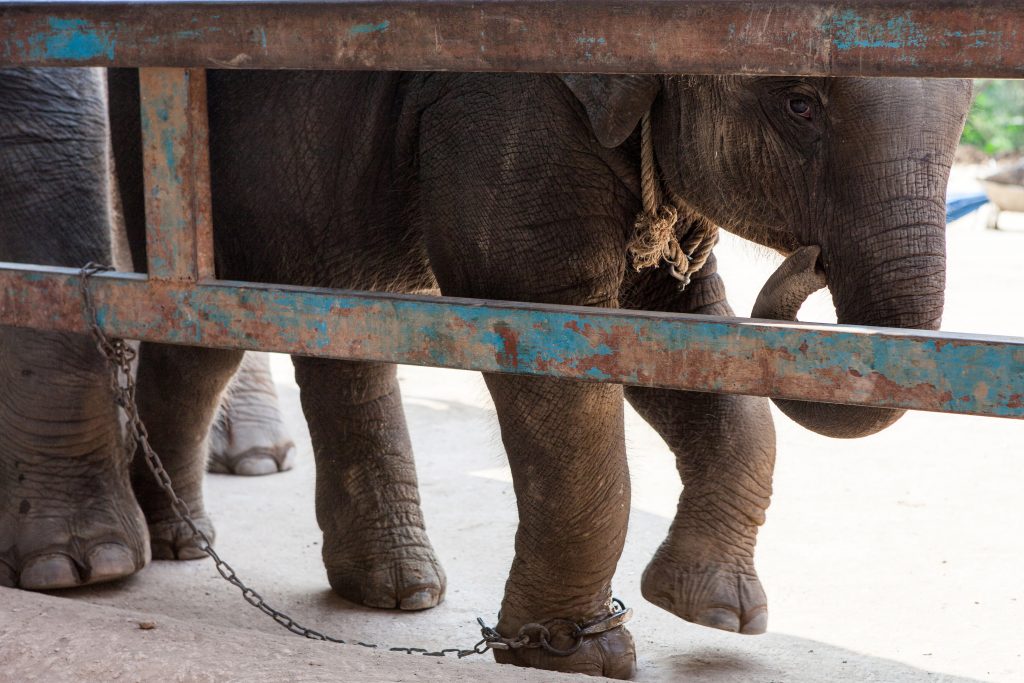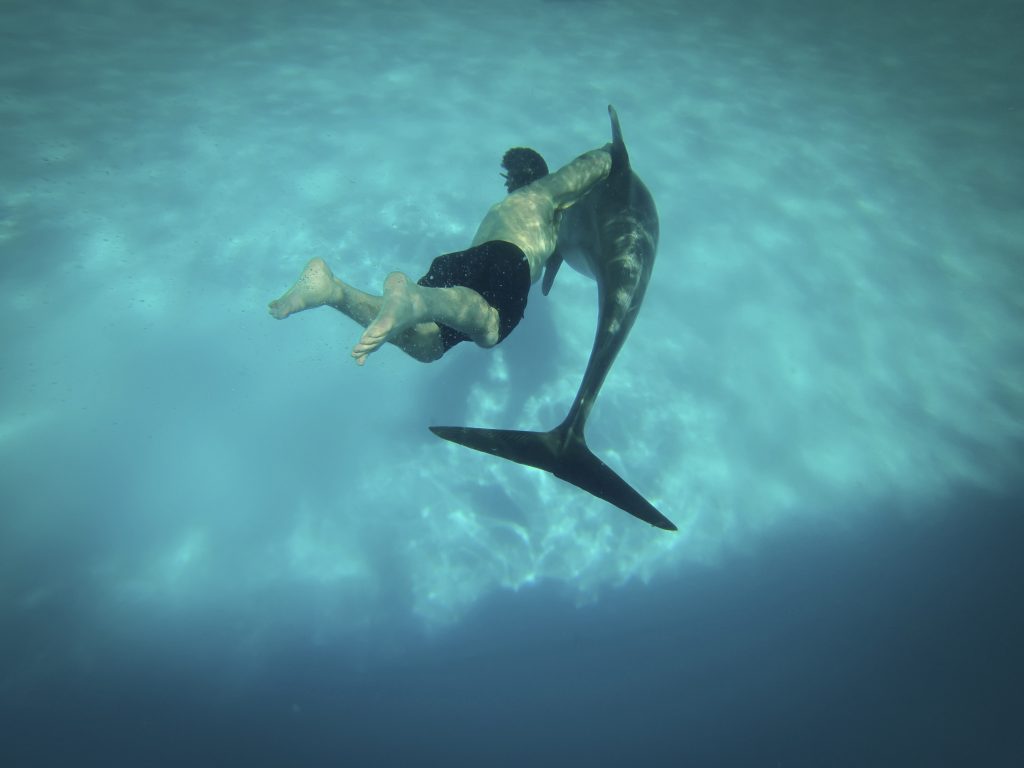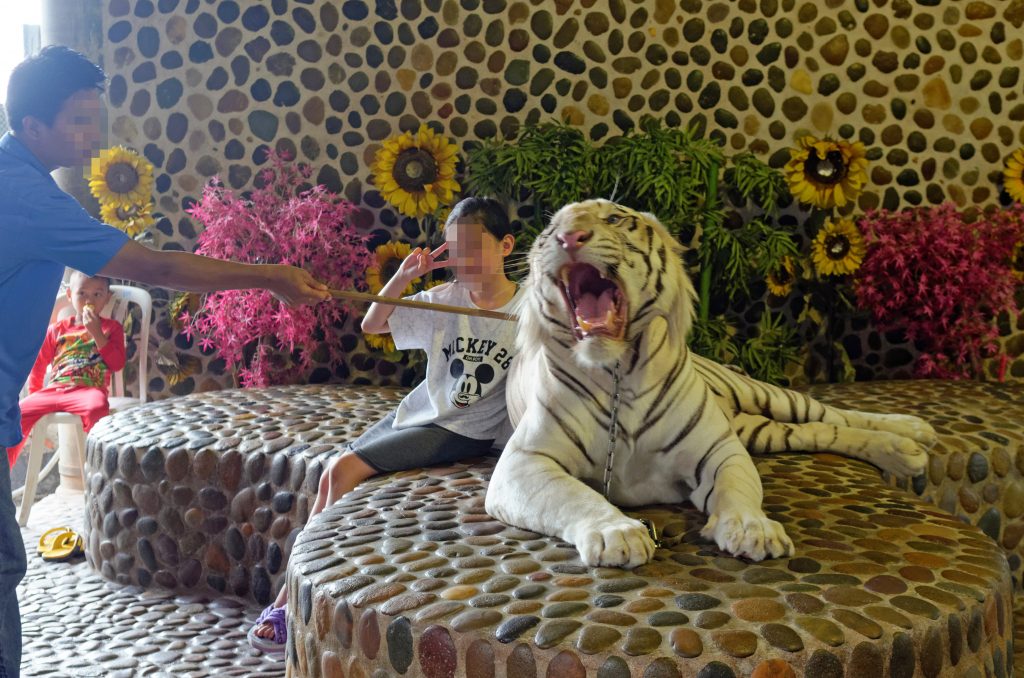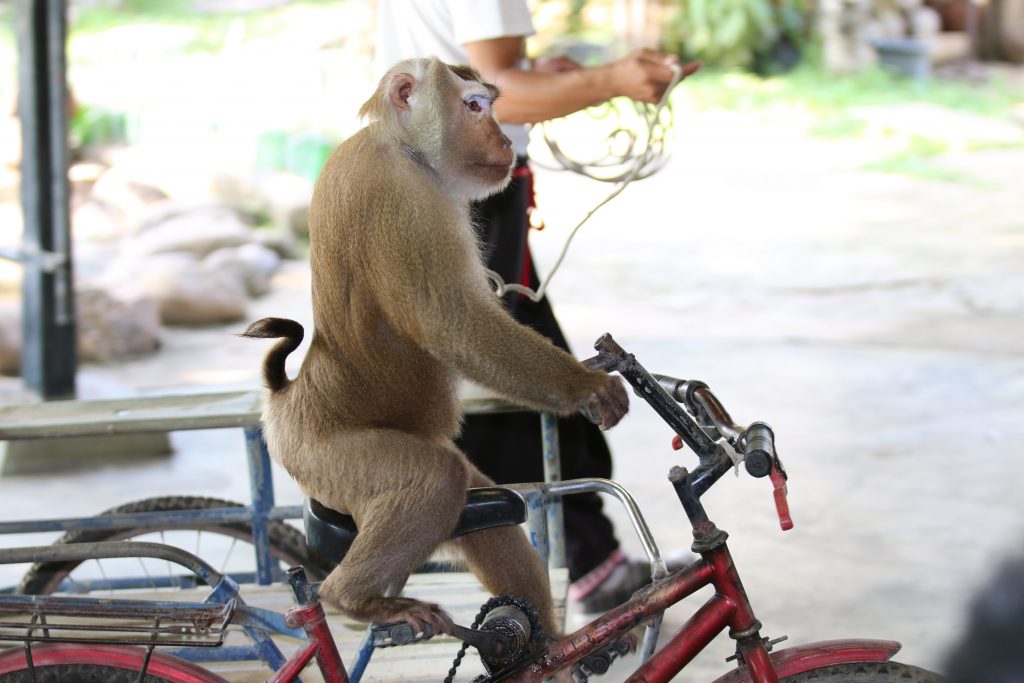Seeing wildlife can be a memorable part of any travel experience and high on the bucket list, especially since many adventure seekers are nature lovers too. However, tourists and travel companies may be unaware that animals all over the world are still being taken from the wild to provide people with up-close experiences for a thrill and photo. Whether bred in captivity or captured from the wild, animals suffer physically and psychologically from not being able to move and behave naturally and from forced contact with humans.
Research carried out by the University of Oxford’s Wildlife Conservation Research Unit (WildCRU) uncovered the suffering of 550,000 wild animals at irresponsible tourist attractions around the world.
The worst cruelty is often hidden from view. Many animals like monkeys, tigers, and elephants endure painful training to force them to do unnatural things like give people rides, perform tricks, and allow people to hold or touch them. Other animals like turtles and dolphins live their entire lives in small, barren tanks that are a small fraction of their natural ranges and don’t even remotely resemble their native habitats.
Tourists love animals and, sadly, they contribute to the animals’ suffering unknowingly. A 2017 poll commissioned by World Animal Protection and conducted by Kantar Public of 12,000 tourists across 12 countries found that:
- 83 percent said tour operators should avoid activities causing suffering for wild animals.
- 60 percent said they would not travel with tour operator if it was known they promoted the use of wild animals in entertainment.
- 82 percent would prefer to see animals in the wild.

With that in mind, here are five of the cruelest animal attractions and why you should avoid them:
1) Riding Elephants
Elephant rides are popular across Asia, particularly in Thailand, and this industry is spreading to Africa. Contrary to popular belief, elephants have not been domesticated. They are wild animals even if they have been used for logging and ceremonies for years. While they can be tamed, their behavior can be unpredictable, especially when they are stressed and frustrated. In order for elephants to allow a person to ride them or get close enough to bathe or feed them, they must be trained to fear people. To establish dominance over them, they are taken from their mothers as babies and forced through a horrific training process known as “the crush.” This involves restraining and severe pain to break the young elephant’s spirit.
While often described as gentle giants, elephants are one of the most dangerous animals to handle. Bullhooks and other painful tools are used to maintain control of them and protect tourists’ safety during close interactions. Despite this, mahouts (elephant handlers) and tourists have been seriously injured and killed by elephants at tourist venues.
The majority of captive elephants at tourist venues were taken from the wild and not bred in captivity. Elephant rides fuel the demand and incentivizes poachers.

2) Swim with Dolphins
Millions of people visit dolphinaria in Mexico, the Caribbean, and around the world unaware of how dolphins suffer when they are forced to perform tricks or swim with tourists all day. While some countries have restricted or banned their capture, dolphins are still being taken from the wild to entertain tourists.
Whether caught in the wild caught or bred in captivity, these dolphins face a lifetime of suffering. They spend their entire lives in a space not much bigger than a swimming pool — completely unnatural and restrictive compared to the open sea. The pools are often treated with chlorine, which can cause painful skin and eye irritations. Captive dolphins also suffer from sunburn because they can’t escape to the ocean depths. The loud noise, constant interaction with tourists, and inability to escape aggressive dolphins in the same tank can cause dolphins serious injuries and stress.

3) Taking Tiger Selfies
Tiger cubs are separated from their mothers at an early age so they can be used as photo props for hours on end. They are handled and hugged by tourists and typically kept chained or in small cages with concrete floors. Although Thailand is a hub of cruel tiger tourism, it is also prevalent in other parts of Asia, Australia, Mexico, and Argentina.
4) Walking with Lions
Lion cubs are bred and taken from their mothers typically within a month of birth to supply the growing lion tourism industry, mostly located in southern Africa. Tourists handle the cubs for hours and pose with them for photos. They are also often told to hit the cubs if they display aggressive or unwelcome behavior.
When the cubs grow too big for tourists to pick up and hug — but are still young enough to control — some are used for the relatively new “walking with lions” experiences. The lions are trained to “safely” walk with tourists, sometimes on leads. These lions face a lifetime in captivity as they cannot be released into the wild. When the animals grow older or become more dangerous, they are either euthanized or sold to zoos, lion farms, and private collectors for profit. Lion park owners have told our investigators that they have little control over what happens to them. The documentary “Blood Lions” exposes how these lions could be sold into the canned hunting industry, whereby trophy hunters pay for the opportunity to shoot at captive lions.

5) Dancing Monkeys
Many species of primates are used for street entertainment. Young macaques are trained aggressively and painfully to make them walk, behave, and appear more human. They are often dressed up to look like geishas and repeatedly forced to dance and perform tricks for groups of tourists. When they’re not performing, the macaques are often kept in small, barren cages or outside on short chains.
Unfortunately, these are just some of the many examples of harmful captive wildlife attractions that should be avoided. A simple rule of thumb: “If you are permitted to hug, handle, or take a selfie with a wild animal, chances are it is cruel, so don’t do it.”
As tourists become increasingly aware of their impact and look for travel companies with animal welfare policies, there is an opportunity to create a significant, positive change.
By spending their tourist dollars wisely — on responsible wildlife watching or in genuine rescue centers — people can often help provide local communities with vital sources of income. Progressive travel companies offering those experiences will be at a competitive advantage.
World Animal Day is 4 October — and the perfect time for Adventure Travel Trade Association (ATTA) members to commit (or recommit) to not selling or promoting inhumane tourist activities and attractions. Here are some actions travel companies can take:
- Commit to animal welfare.Take the World Animal Protection’s pledge to not sell or promote wildlife entertainment to your customers.
- Remove wildlife entertainment from your supply chain.
- Educate your travelers on your company’s commitment to offer cruelty-free experiences and explain what they can do to be animal-friendly tourists. Include World Animal Protection’s animal-friendly travel guide in every trip itinerary prior to departure.
- Continue your own education. To learn more about any of the above-mentioned animal encounters, please contact World Animal Protection at [email protected]. We would be more than happy to provide additional information, including training tools and checklists.
